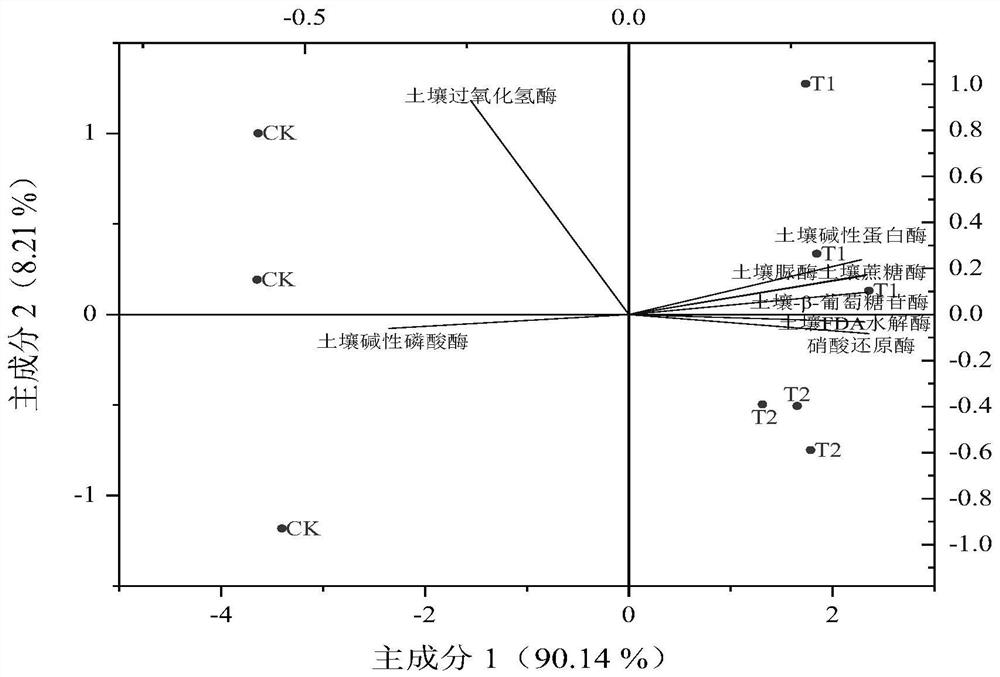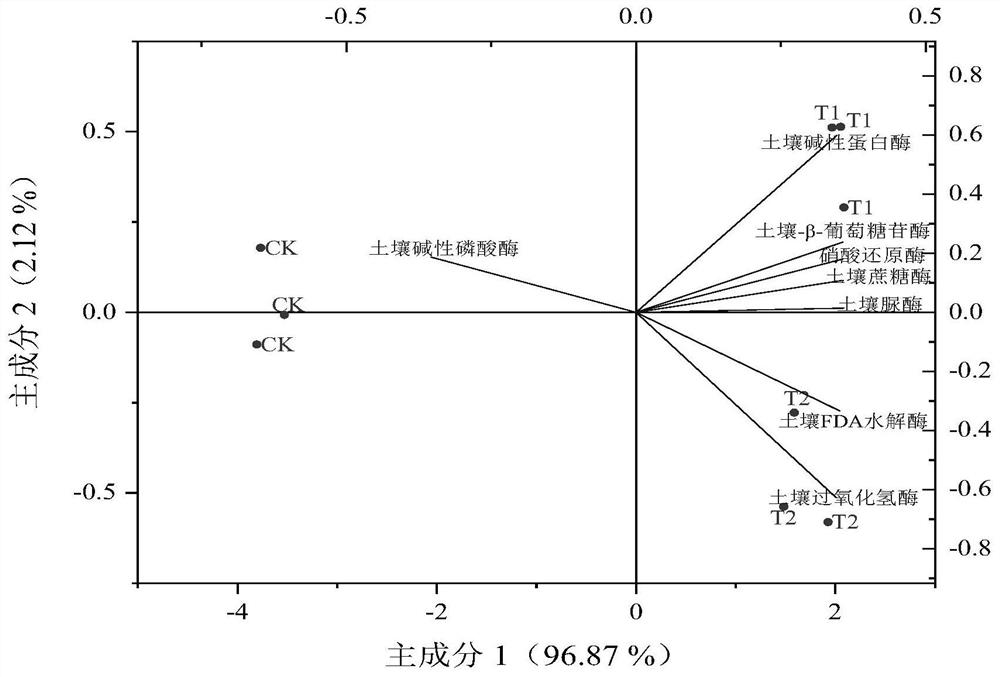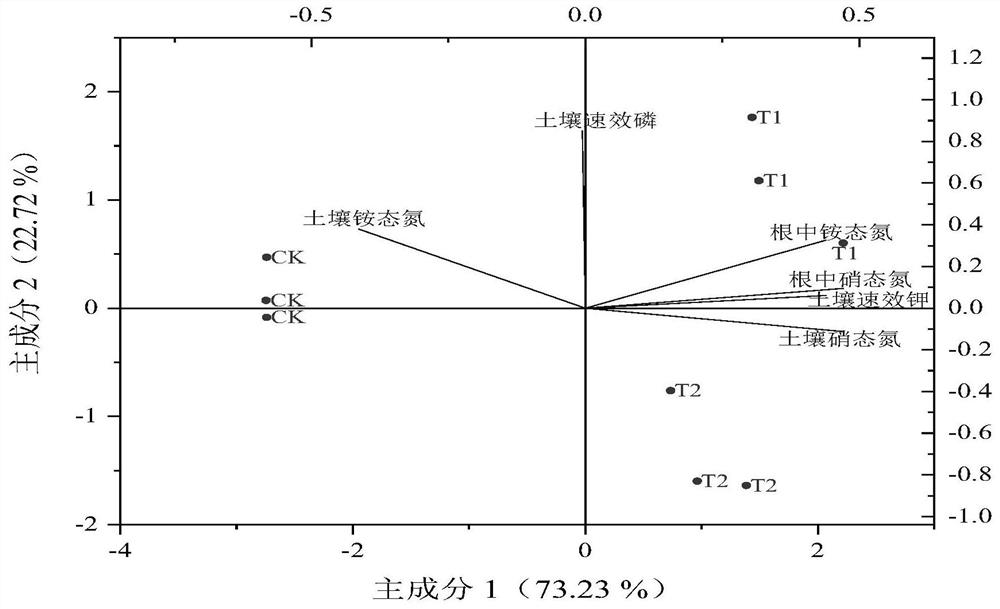Improved compound microbial agent and application thereof in yield increase of angelica sinensis
A technology of compound microbial inoculants and microbial fertilizers, applied in the directions of microorganism-based methods, microorganisms, and chemicals used for biological control, can solve problems such as urea burning and ammonium salt poisoning that have not been considered, and achieve the goal of promoting the absorption of rich nutrients. The effect of collecting, promoting transformation and improving plant yield
- Summary
- Abstract
- Description
- Claims
- Application Information
AI Technical Summary
Problems solved by technology
Method used
Image
Examples
Embodiment 1
[0043] Example 1 Determination of microbial phosphorus solution, nitrogen fixation, and nitrification
[0044] 1. Qualitative detection of phosphorus dissolving ability
[0045] Inoculate different strains on NBRIP inorganic phosphorus solid medium, culture at a constant temperature of 28°C for 2-5 days, observe whether there is a phosphorus-dissolving circle and the size of the phosphorus-dissolving circle, and determine its phosphorus-dissolving effect on inorganic phosphorus according to the size of the phosphorus-dissolving circle effect.
[0046] 2. Quantitative detection of nitrogen fixation activity
[0047] Take 5ml of the purified bacterial solution and inoculate it in 50ml of sterilized Ashubei nitrogen-free medium, 200r min -1 , shake culture at 30°C for 72h, measure the turbidity OD 600 .
[0048] Determination of the nitrogenase activity of strains by acetylene reduction method: pipette 5ml of the above-mentioned fresh bacterial solution into a 20ml headspace ...
Embodiment 2
[0058] The impact of different treatments of embodiment 2 on the yield-related indicators of Angelica sinensis
[0059] After harvesting, the number of indeterminate roots was calculated by conventional methods, the diameter, length and body length of the reed head were measured with a vernier caliper, and the fresh weight of a single plant was weighed with an electronic scale. 300 plants were measured for each treatment, and the average value was calculated.
[0060] The results are shown in Table 2. Compared with CK, the number of adventitious roots, reed head diameter, reed head length, body length, and average fresh weight of Angelica sinensis after treatment with CBS4 single bacteria basically did not change. The number of adventitious roots, diameter of reed head, length of reed head, body length and average fresh weight per plant all increased. Compared with the CK group, after being treated with the compound bacterial agent (T1) of the present invention, the number of ...
Embodiment 3
[0064] Embodiment 3 angelica rhizosphere soil enzyme activity assay
[0065] According to the method described in the kit, the rhizosphere soil urease (S-UE), soil sucrase (S-SC), soil FDA hydrolase, soil β-glucosidase (S-β-GC), soil alkali Protease (S-ALPT), soil alkaline phosphatase activity (S-AKP / ALP), soil catalase (S-CAT) activity, each sample was repeated 3 times, and the average value was calculated.
[0066]The effects of different treatments on rhizosphere soil enzyme activities are shown in Table 3. Compared with the CK group, T1 and T2 compound bacterial agents (S2 and S3 periods) all increased the FDA hydrolase, soil invertase, soil-β-glucosidase, soil urease, and soil alkaline protease in the rhizosphere of Angelica sinensis. The enzyme activity decreased the activity of alkaline phosphatase; the results showed that the two compound bacterial agents could improve the microbial activity of rhizosphere soil, the transformation ability of organic matter, promote ca...
PUM
 Login to View More
Login to View More Abstract
Description
Claims
Application Information
 Login to View More
Login to View More - R&D
- Intellectual Property
- Life Sciences
- Materials
- Tech Scout
- Unparalleled Data Quality
- Higher Quality Content
- 60% Fewer Hallucinations
Browse by: Latest US Patents, China's latest patents, Technical Efficacy Thesaurus, Application Domain, Technology Topic, Popular Technical Reports.
© 2025 PatSnap. All rights reserved.Legal|Privacy policy|Modern Slavery Act Transparency Statement|Sitemap|About US| Contact US: help@patsnap.com



